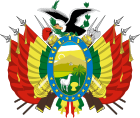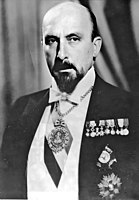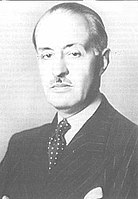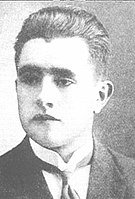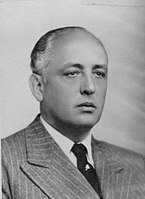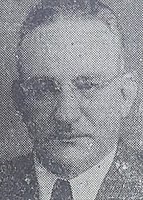
The vice president of Bolivia, officially known as the vice president of the Plurinational State of Bolivia, is the second highest political position in Bolivia. The vice president replaces the president in his definitive absence or others impediment and is the ex officio President of the Legislative Assembly.

José Enrique Hertzog Garaizábal was a Bolivian politician who served as the 42nd president of Bolivia from 1947 to 1949. He resigned in 1949, and died in exile in Argentina.

Mamerto Urriolagoitía Harriague was a Bolivian lawyer and politician who was the 43rd president of Bolivia, from 1949 to 1951. A member of the Republican Socialist Unity Party, he had previously been the 26th vice president of Bolivia, from 1947 to 1949, under President Enrique Hertzog. Urriolagoitía's short reign was characterized by the violent suppression of the opposition, especially unionists, and he is remembered for his inflexibility. He is considered the last constitutional president of the largely oligarchic social and political order that reigned in the country until the advent of the 1952 Bolivian National Revolution.

Gualberto Villarroel assumed office as the 39th President of Bolivia on 20 December 1943, and his term was violently cut short by his death on 21 July 1946. A colonel during the Chaco War, Villarroel and the Reason for the Fatherland (RADEPA) military lodge joined the fledgling Revolutionary Nationalist Movement (MNR) to overthrow President Enrique Peñaranda in a coup d'état.

Enrique Peñaranda assumed office as the 38th President of Bolivia on 15 April 1940, and his term was terminated by a coup d'état on 20 December 1943. A general in the Chaco War, Peñaranda was brought forth by the traditional conservative political parties, sidelined since the end of the Chaco War, as their candidate in the 1940 general elections.
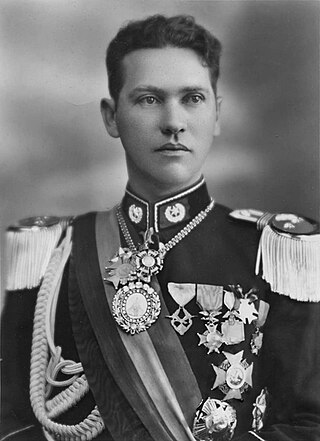
Germán Busch assumed office as the 36th President of Bolivia on 13 July 1937, and his term was cut short by his death on 23 August 1939. A young military officer during the Chaco War, Busch attempted to champion the cause of Military Socialism brought forth by his predecessor David Toro but, unhappy with the results produced by his few reforms, opted to declare himself dictator in April 1939 before committing suicide four months later.

Carlos Quintanilla assumed office as the interim 37th President of Bolivia on 23 August 1939, and his mandate ended on 15 April 1940. A general of the senior officer corps, Quintanilla assumed control of the presidency on an interim basis following the suicide of his predecessor, Germán Busch.
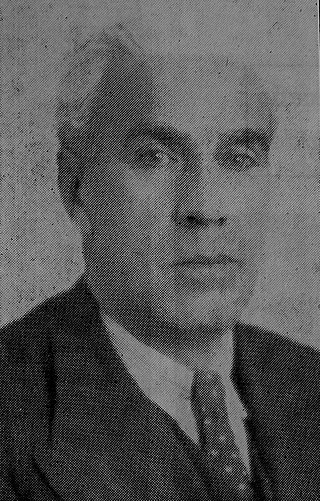
Tomás Monje assumed office as the interim 41st President of Bolivia on 17 August 1946, and his mandate ended on 10 March 1947. The President of the Superior District Court of La Paz, Monje was chosen to lead an interim junta following the violent overthrow of President Gualberto Villarroel on 21 July 1946. Having been ill at the time, Monje only assumed the position 27 days later, chairing the junta until new elections could be held.
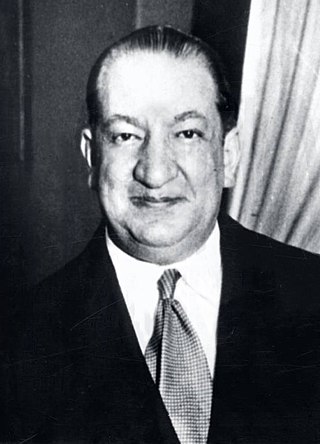
The Cabinet of José Luis Tejada Sorzano was composed of three cabinets which constituted the 94th–96th national cabinets of the Republic of Bolivia. It was led by President José Luis Tejada Sorzano, a Liberal, and was in office from 29 November 1934 to 17 May 1936.

Gabriel Gosálvez Tejada was a Bolivian politician, journalist, economist, and diplomat. Throughout his political career, Gosálvez held various ministerial officers and diplomatic posts as a member of the United Socialist Party. When that party merged into the Republican Socialist Unity Party, Gosálvez was presented as its presidential candidate in the 1951 general election.
The Ministry of Government is a ministry of the Plurinational States of Bolivia. It is tasked with regulating public policy. The current Minister of Government is Eduardo del Castillo since 9 November 2020.

Mamerto Urriolagoitía assumed office as the 43rd President of Bolivia on 24 October 1949, and his term was terminated upon his resignation in a self-coup on 16 May 1951. The vice president of Enrique Hertzog, Urriolagoitía had already been serving as acting president since 7 May 1949 but officially took office after Hertzog presented his resignation on 22 October.
The Government Junta of Bolivia, officially known as the Honorable Government Junta, was a civil junta which ruled Bolivia from 21 July 1946 through 10 March 1947. It consisted of labor, teacher, and student representatives as well as magistrates of the Superior District Court of La Paz. The President of the Junta was Superior District Court President Tomás Monje who was appointed following the violent overthrow of President Gualberto Villarroel on 21 July 1946. As Monje was ill at the time of Villarroel's death, Néstor Guillén, the Dean of the Superior District Court, took charge for the first 27 days before delegating command to Monje on 17 August 1946. As President of the Junta, Monje acted as a neutral figure heading the transition back to civilian government. The junta was dissolved on 10 March 1947 when Enrique Hertzog, winner of the January general election, took office as president.

José Miguel de Velasco assumed offices as the 4th President of Bolivia on 12 August 1828. Due to the tumultuous events of the time, the original cabinet formed by Velasco on 12 August 1828 continued to function until 24 May 1829, spanning the entire six day presidency of Pedro Blanco Soto and the two nonconsecutive terms of Velasco which preceded and succeeded him.

The Velasco III Cabinet constituted the 10th and 11th cabinets of the Bolivian Republic. It was formed on 27 March 1839, thirty-three days after José Miguel de Velasco was reinstalled as the 4th president of Bolivia following a coup d'état, succeeding the Santa Cruz Cabinet. It was dissolved on 10 June 1841 upon Velasco's overthrow in another coup d'état and was succeeded by the Cabinet of José Ballivián.

The Ballivián Cabinet, which comprised the 12th to 14th cabinets of the Bolivian Republic, came into being on October 18, 1841. This was 21 days after José Ballivián assumed office as the 9th president of Bolivia, following a coup d'état that saw him take over from the Third Velasco Cabinet. The cabinet continued to serve until December 23, 1847, when Ballivián resigned from office, and it was subsequently dissolved. Cabinet of Eusebio Guilarte succeeded the Ballivián Cabinet.

The Velasco IV Cabinet constituted the 16th cabinet of the Bolivian Republic. It was formed on 4 February 1848, 17 days after José Miguel de Velasco was reinstalled) as the 4th president of Bolivia following a coup d'état, succeeding the Guilarte Cabinet. It was dissolved on 16 October 1848 when acting president José María Linares merged all ministerial portfolios into a singular General Secretariat and was succeeded by the Cabinet of Manuel Isidoro Belzu.

The Ballivián Cabinet constituted the 34th cabinet of the Republic of Bolivia. It was formed on 9 May 1873 after Adolfo Ballivián was sworn in as the 18th president of Bolivia following the 1873 general election, succeeding the First Frías Cabinet. It was dissolved on 14 February 1874 upon Ballivián's death and was succeeded by the Cabinet of Tomás Frías II.

The Frías II Cabinet constituted the 35th cabinet of the Republic of Bolivia. It was formed on 14 February 1874 after Tomás Frías was sworn in as the 17th president of Bolivia following the death of Adolfo Ballivián, succeeding the Ballivián Cabinet. It was dissolved on 4 May 1876 upon Frías' overthrow in a coup d'état and was succeeded by the Cabinet of Hilarión Daza.

